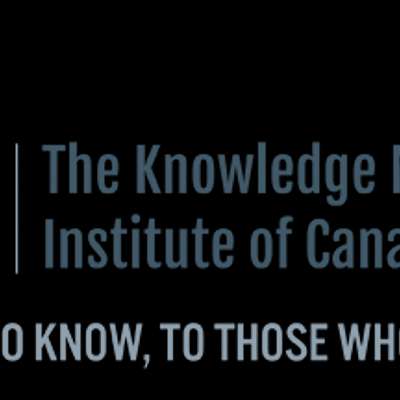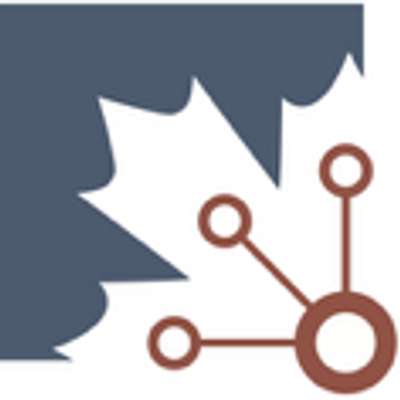Eyes Wide Open Trailer
[00:00:00] Blake Melnick: Well, I'm back and welcome to this week's episode of For What It's Worth. I'm your host, Blake Melnick, and this is the trailer for our next installment in our Many Faces of Innovation series. Listeners to the show this season know that a lot of my focus has been on innovation. With the goal of making it more understandable, accessible, and actionable.
[00:00:50] And I've been doing this by interviewing a host of innovators from across different fields of endeavour. And each guest has been carefully selected to [00:01:00] illustrate a different face of innovation. We kicked off our series back in 3 with a three part interview with my friend and colleague, Dr.
[00:01:08] Tom Carey. Tom has spent much of his career focused on both researching the innovation dynamic and applying his findings to action innovation within both higher ed and the workplace. Over the past six years, Tom and I, along with a dedicated team of researchers and practitioners from around the globe, have worked together to advance Canada's capacity and capability for innovation.
[00:01:34] Specifically, employee led innovation aimed at improving the quality of work. And we've done this through our not for profit organization we founded in 2018 called WINCAN, Workplace Innovation Network for Canada. The three part interview with Tom was designed to create a framework for altering people's perspective around innovation.
[00:01:58] That it is not solely the [00:02:00] preserve of wealthy inventors, well funded universities, or venture capitalists. That it is accessible to everyone through a combination of acquired skills, experience and knowledge, all which contribute to building that mindset for innovation. Which, by the way, our research has shown to be perhaps the key attribute in unlocking the innovation dynamic in graduates and employees alike.
[00:02:29] In season four, we began the series with a two part interview with Dr. Terry Salias from Queen's University and his seminal research around what motivates people to innovate. From there, we interviewed Stephen Cohos from the engineering design firm Entuitive based in Calgary, Alberta. And this interview told the story of Stephen's innovation journey as an innovation catalyst with Entutive and highlighted adaptive innovation in the workplace, illustrating the importance of [00:03:00] external knowledge capture transfer and translation and job crafting to support employee led innovation.
[00:03:07] We saw ideas originally developed in one context, adapted for use in another to drive a different set of outcomes. In the episode, which followed the Power of Sound with guest Tom Powers, we looked at innovation in sound where Tom's innovation efforts focused on rejuvenating something that had been lost.
[00:03:28] Interpersonal musical entrainment as a result of the excessive use of digital compression technologies. Tom figured out a way to bring this back through the development of his 4 Bus recording method, using the very technology that was responsible for its demise. An example of reconstructive innovation.
[00:03:52] In our last episode, The Power of Ideas, with my guest, Dr. Ruth Backstrom, author of Igniting a Bold New Democracy, [00:04:00] we examined the power of ideas to bring people together scale societal innovation challenges. In this case, Rebuilding democracies, leveraging a shared set of values to ignite meaningful discourse, resulting in new actionable ideas for rebuilding democratic systems in accordance with the needs and realities of a new world.
[00:04:26] You know, the really cool thing for me is what I'm learning about innovation, particularly in terms of fostering the innovation mindset. Firstly, the more I engage with innovation, the more opportunities for innovation I recognize. Secondly, innovation tends to be problem or challenge based and purpose driven.
[00:04:50] Often it comes from a feeling of dissatisfaction with the status quo and a desire for change. And while I consider myself an innovator, hosting [00:05:00] this series and hearing the ideas of my guests has increased both my awareness of and my own capability for innovation. Here's a small example. Tom Locke's brilliant idea of using the all too familiar QR code to create an interactive reading experience in his award winning book, Moments in Time, Inspired me to adapt this idea for our show.
[00:05:24] I realized early on that many people unfamiliar with podcasts weren't sure how to find For What It's Worth. And I fielded many questions about how to access episodes, how to subscribe to the show. When I would meet people, I would give them the URL, but of course they wouldn't remember that. So I decided to adapt Tom's idea, and I had our show t shirts made with a small QR code on the back.
[00:05:48] I did the same with my business cards. Now people can scan their shirts, or mine. I really only need one business card in my wallet for people to scan when I talk to them about the show. And [00:06:00] when I'm in a lineup to see a show myself, curious folks see the logo, scan my shirt, and become ambassadors for the show.
[00:06:08] Tom, you helped me address a problem with a solution that is simple, innovative, and cost effective. Thank you. One of the other things that has become abundantly clear to me about innovation and innovative ideas is they are grounded in context. Oftentimes good ideas die on the vine, so to speak, because at the time the idea was conceived, there was no context to which it could be applied.
[00:06:34] In some cases, the context might be the market. In others, it might be the lack of expertise for development. Or it might be an outlier idea. In many cases, however, it might simply be an idea that no one knew they needed.
[00:06:53] My guest on the next episode of The Many Faces of Innovation is Sue Siri, founder of Iris Booth.[00:07:00]
[00:07:00] Sue is a photographer by profession whose innovation is what I would describe as both incremental and situational. Born from a certain degree of dissatisfaction at a job she'd been doing for many years, and a "ah ha" moment when she recognized the world had changed and a new context had emerged which matched both her experience as a photographer and her desire to do something different.
[00:07:26] Her innovation was not new. In fact, all of you will be familiar with it and will likely have used it in its original incarnation many times.
[00:07:37] Truth be told, when I met Sue a few years ago and she explained what she was doing, I didn't get it. I don't mean I didn't understand it, I just didn't get the value proposition.
[00:07:50] But when I did, I realized the brilliance of the idea, the need in the marketplace, and the elegant simplicity of her business [00:08:00] model. Make sure you tune in for the next episode of the Many Faces of Innovation called Eyes Wide Open to hear Sue's story, for what it's worth.
[00:08:13]


